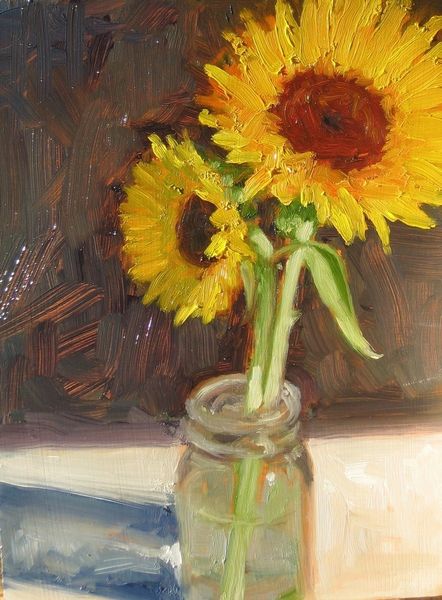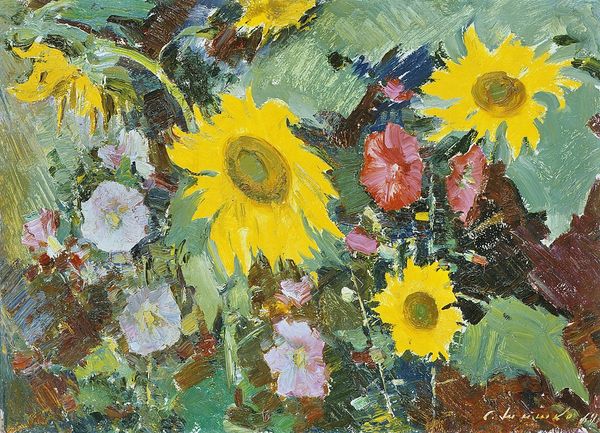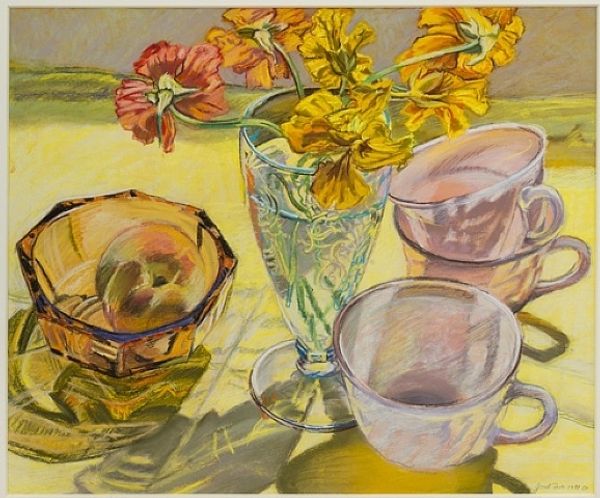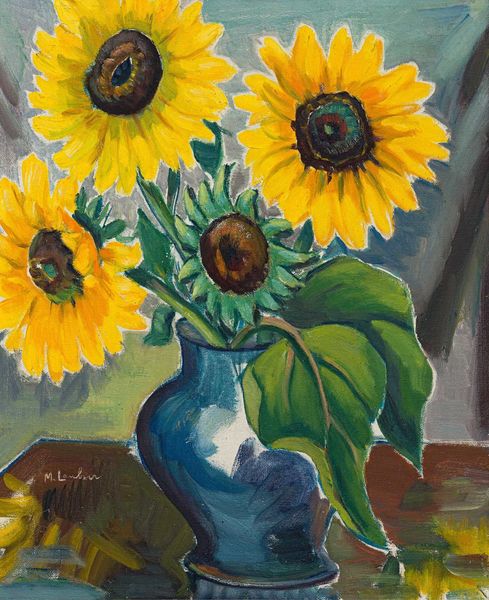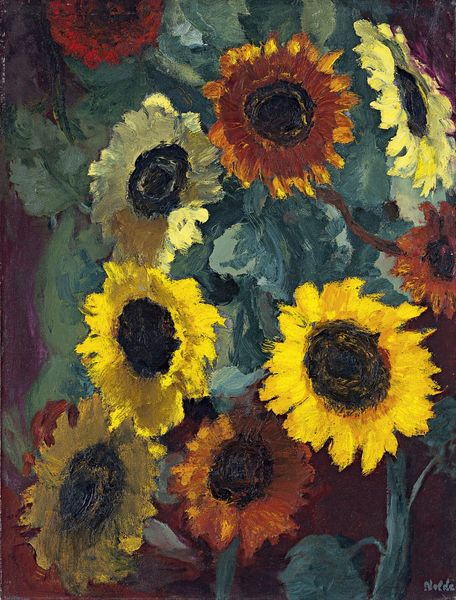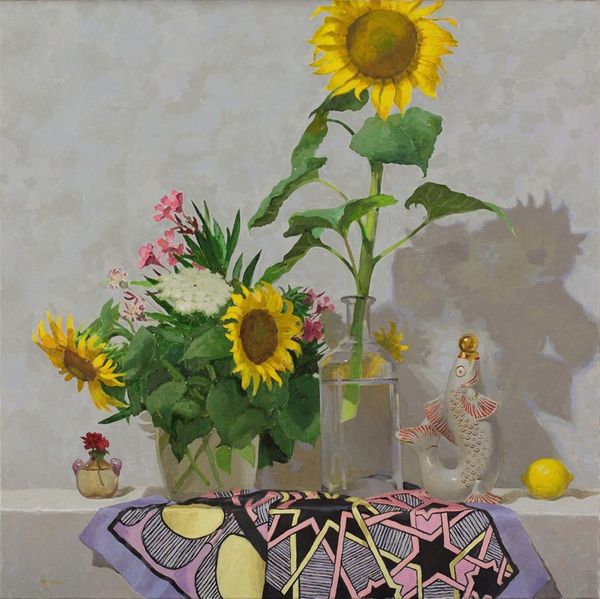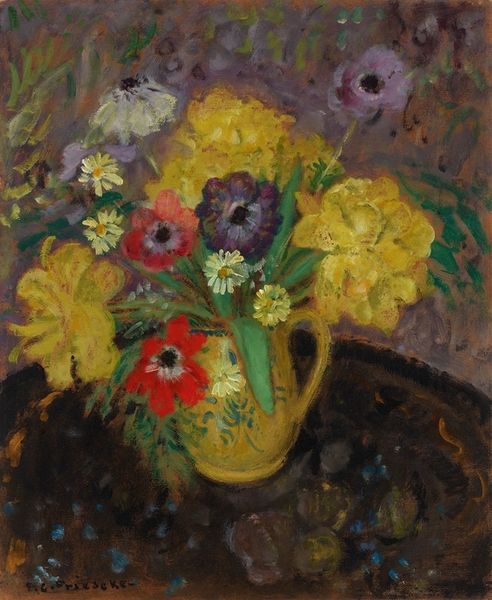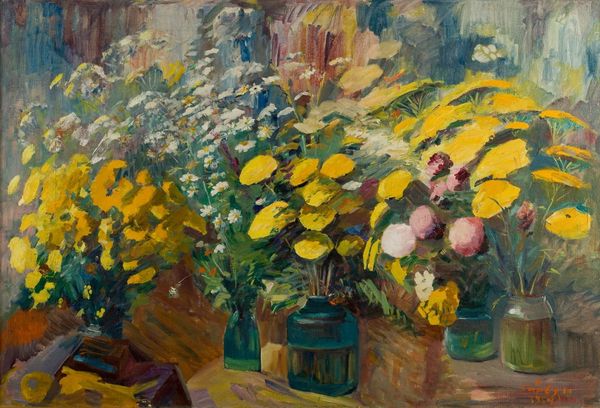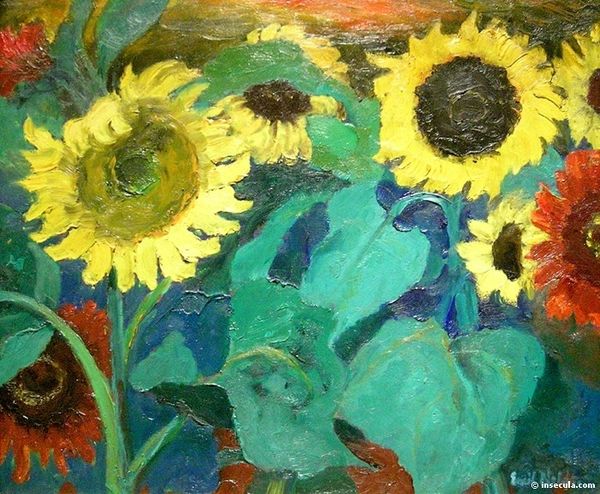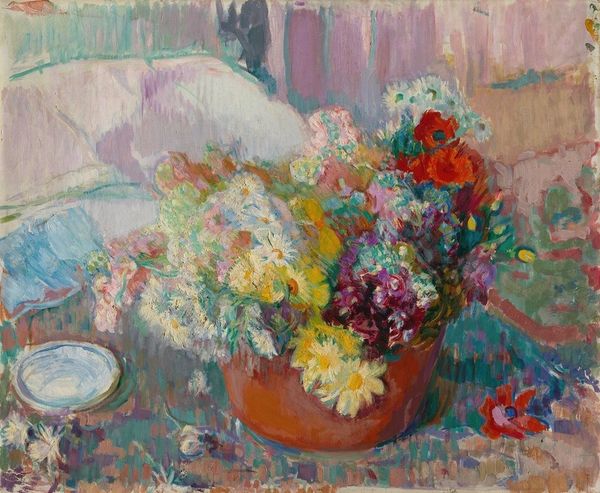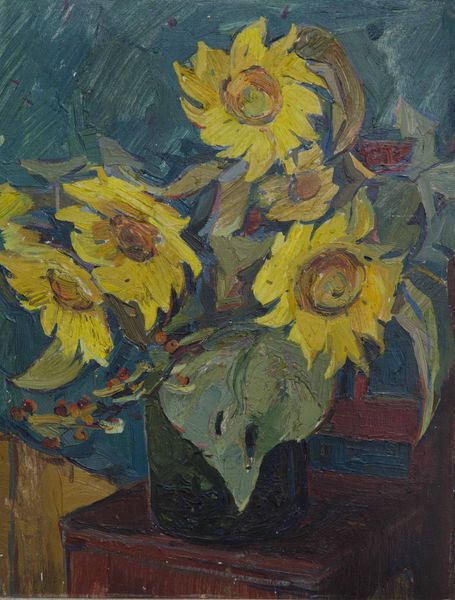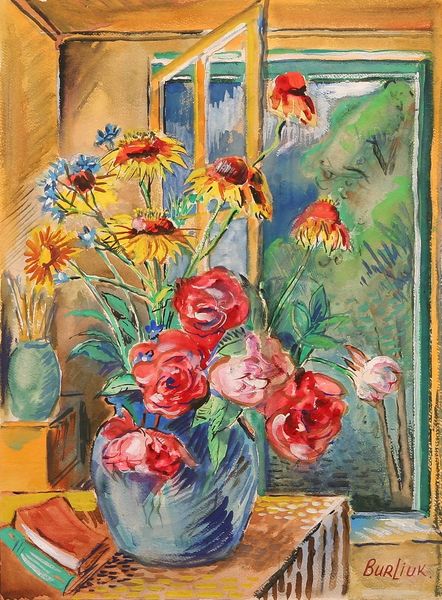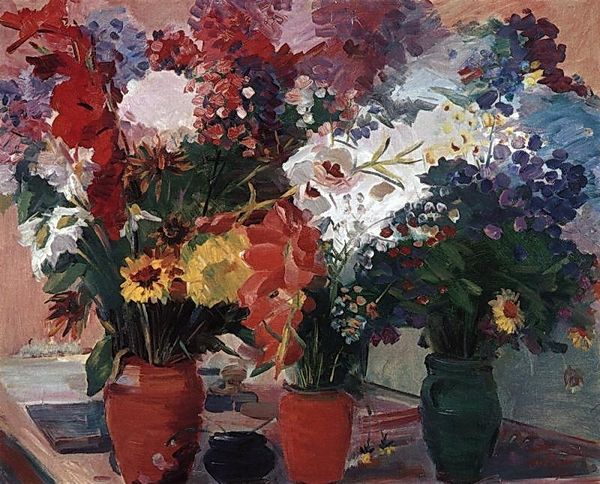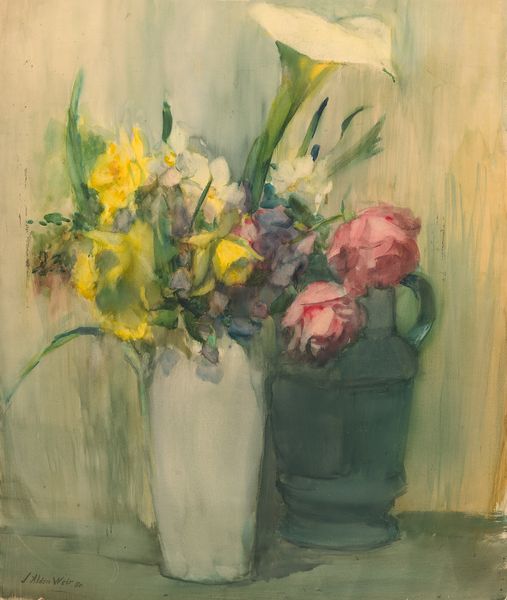
painting, oil-paint, impasto
#
painting
#
oil-paint
#
landscape
#
oil painting
#
impasto
#
modernism
Copyright: Modern Artists: Artvee
Curator: So, we’re looking at a still life, titled "The End of Summer." It is an oil painting rendering a vase of sunflowers, bearing the hallmarks of modernism and distinguished by visible impasto brushstrokes. What is your first take? Editor: My immediate reaction is one of melancholy, despite the sunflowers. They’re gorgeous, but there’s a sense of wilting, a fading brilliance…that evokes nostalgia, and perhaps a touch of regret. Curator: That resonates. Sunflowers are incredibly evocative; universally read as a symbol for adoration, longevity, and even spiritual knowledge. The play of light is a major visual motif here, and these objects symbolize both death and rebirth. I’d even consider its relationship to earlier vanitas paintings! Editor: Exactly. Think about the history of sunflowers themselves. Introduced to Europe from the Americas, they carry stories of colonization, trade, and the transfer of knowledge – sometimes violently. This piece can connect with intersectional stories tied to colonialism, environmentalism, agriculture and class. Curator: An excellent point. The bouquet itself becomes a symbol, too. Placed on what appears to be an austere tiled surface and situated beneath a window partially blocked by a white curtain…there is a lot to unpack here! The arrangement mirrors how our cultures curate nature itself. It is mediated, presented, carefully, for maximum affect. Editor: It feels staged in a way, a memorial tableau perhaps. The window suggests possibilities beyond the canvas’s boundary, while the wilting blooms pull us back to the present moment, to an awareness of decay. Where and how can we make space to value experiences more holistically, before their “end?” Curator: The title of the work frames our whole perception, right? The end. Symbolically, the setting sun always suggests that potential, too; the chance to greet another dawn after darkness. The painting uses symbolism to frame a moment of transformation. Editor: Ultimately, despite my melancholic interpretation, this work speaks volumes about resilience and continuity, and invites conversations regarding human relationship with ecological transformation. Curator: Indeed. What seemed a mere "still life" unveils a powerful exploration of cyclical time. Editor: Right, art as both mirror and lamp!
Comments
No comments
Be the first to comment and join the conversation on the ultimate creative platform.
